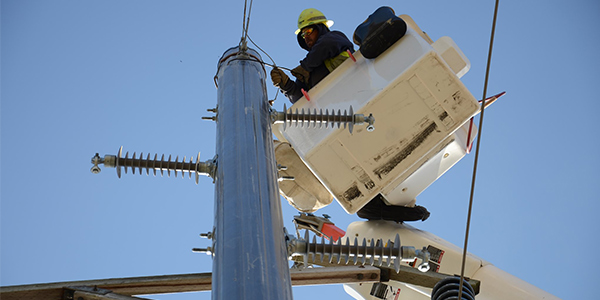February’s cold snap set MISO’s winter peak this year but didn’t unseat the grid operator’s all-time winter demand record, stakeholders learned last week.
MISO set the winter peak of 103.1 GW Feb. 15, short of its 104-GW prediction and its all-time winter peak of 109 GW set in early January 2014. MISO South registered a 31.6-GW peak, nearly matching the region’s 32.7-GW all-time summer peak set in August 2015.
JT Smith, MISO’s director of operations planning, said while the wintertime peak didn’t reach worst-case projections of 109 GW, unprecedented weather patterns still necessitated emergency operations.
“It was a combination of cold weather over a longer stretch of time … and a band of snow and ice … over a number of days,” Smith said during a Reliability Subcommittee teleconference April 1.
Despite the snow and ice dumped on the system, MISO was able to limit load sheds to two-hour rolling blackouts in MISO South and smaller outages caused by local transmission emergencies. (See MISO, Stakeholders Disagree on Post-storm Accreditation.)
MISO said it used load-shed orders and generator redispatch to manage an unusual east-to-west power flow bias on its system during the punishing weather. The grid operator said it directly exported power to SPP when it could while also experiencing intense flows from PJM to SPP that strained MISO’s system.
Smith said the MISO South load shed was called in part to manage the contractual limits on the RTO’s Midwest-to-South transfer limit.
Mississippi Public Service Commission staffer Bill Booth asked whether MISO considered violating the transfer limit to avoid MISO South load curtailment, though it would have later paid penalties to SPP and the joint parties later. The RTO has an obligation to not exceed the 3,000-MW Midwest-to-South directional transfer limit for more than 30 minutes at a time.
“I don’t think it’s a money situation here. It’s strictly a question of managing the grid reliably for us and our neighbors,” Smith said. “That there wasn’t an uncontrolled load shed, I think, is a testament not just to our control room operators but all our members’ control room operators.”
Customized Energy Solutions’ David Sapper said MISO should consider analyzing its most essential generating assets to make sure they’re replaced appropriately upon retirement.
MISO and its Independent Market Monitor both agreed that control room operators managed to avert a more dangerous situation.
Market Monitor David Patton emphasized that MISO employed numerous proactive measures that lessened the severity of the event.
“MISO operators performed admirably under extraordinary conditions, taking key actions in the face of simultaneous emergencies to protect the system,” he told the Board of Directors March 23.
But Patton said the event highlights the need for MISO to review its transmission loading relief procedures. He said the grid operator is often too slow to call relief procedures.
Patton also said RTO is opting not to test constraints that would be better defined as market-to-market (M2M) constraints with SPP. He said one constraint had previously been categorized as M2M “but had been disabled and not retested.” He said that during the event, that constraint accounted for $65 million in congestion costs, $10 million of which SPP would have been responsible for had the constraint been designated M2M.




